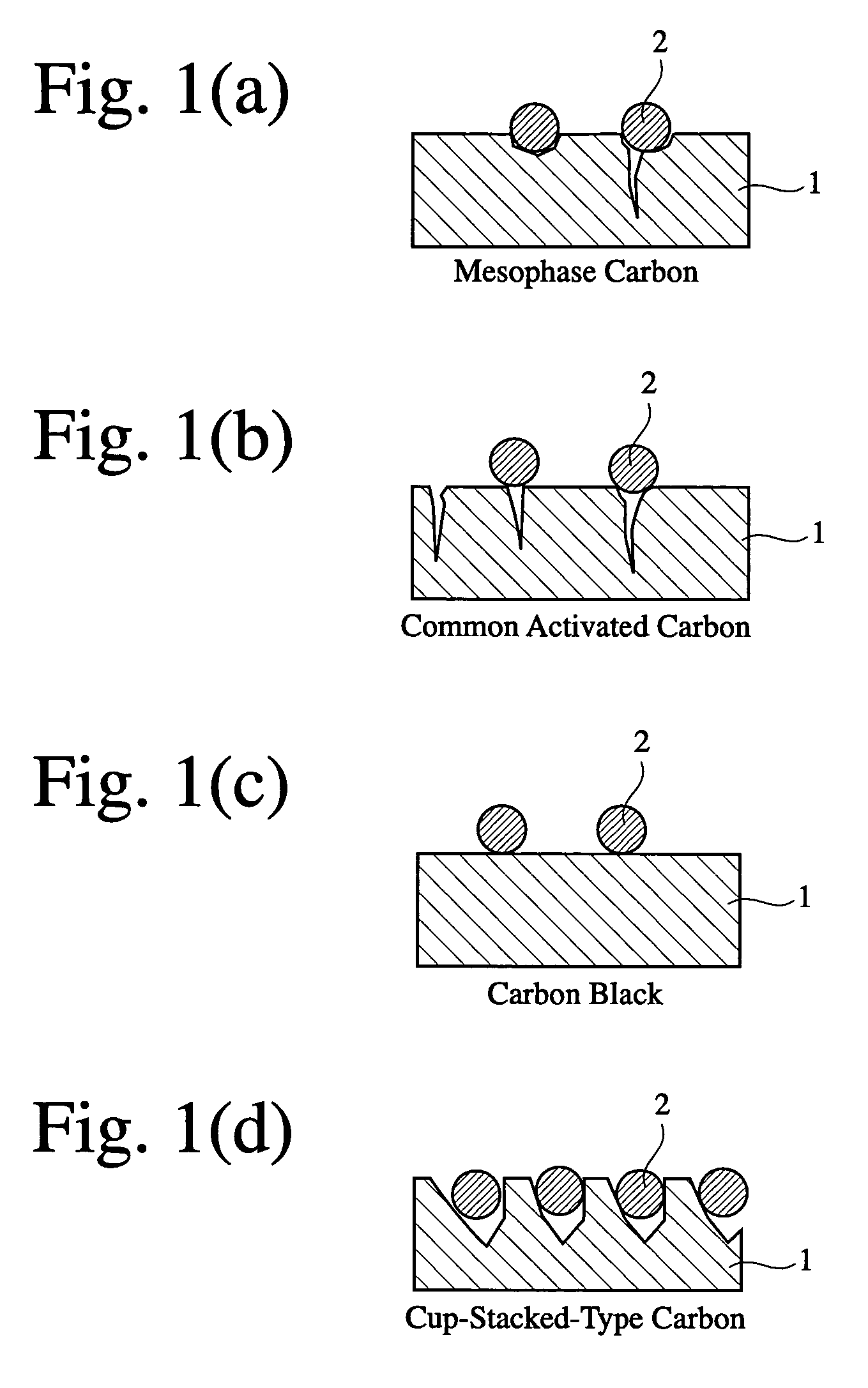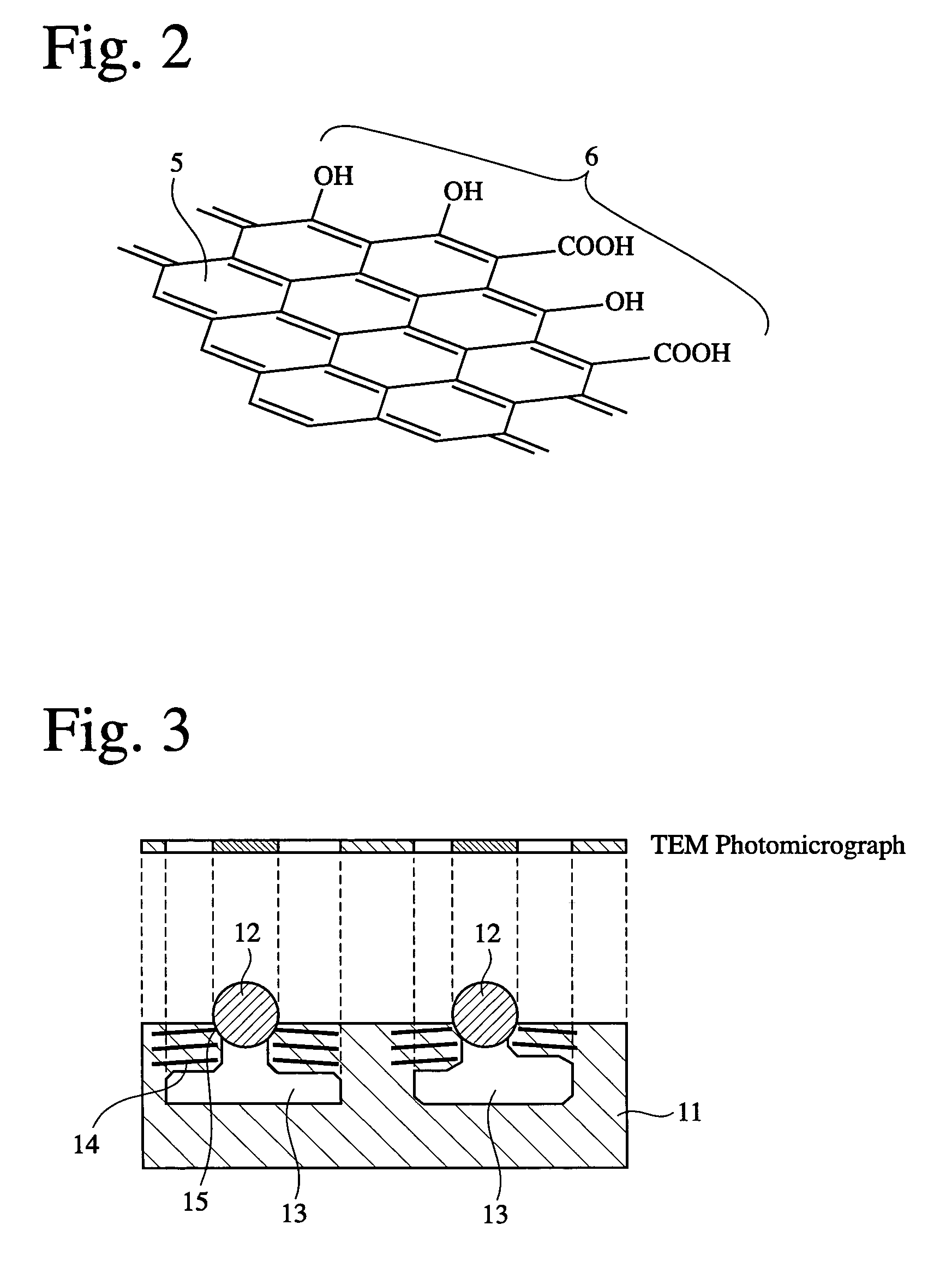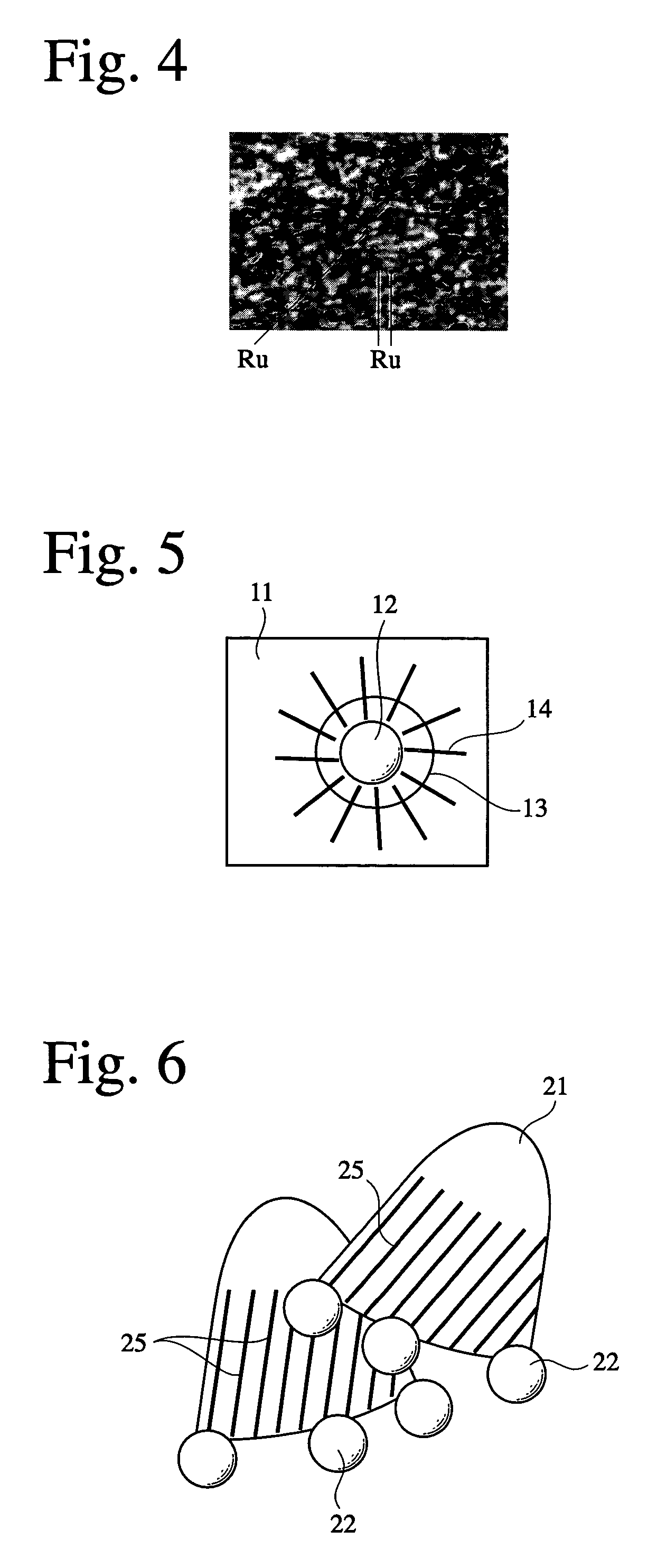Catalyst particle usable for dehydrogenation of alcohols
a technology of catalyst particles and alcohols, applied in the field of catalyst particles, can solve the problems of disadvantageous instability of carriers and difficult fixation of dispersed active metals to silicon oxide carriers for a long time, and achieve excellent catalytic activity, without substantial deterioration
- Summary
- Abstract
- Description
- Claims
- Application Information
AI Technical Summary
Benefits of technology
Problems solved by technology
Method used
Image
Examples
example 2
[0083] Catalyst particles were produced and evaluated with respect to the catalytic activity in the same manner as in Example 1 except for using carbon nanohorns instead of the mesophase carbon for the carrier. The changes of the amount of hydrogen produced with the reaction time are shown in Table 1 and FIG. 19. The catalyst particles of Example 2 according to the present invention had a stable, high catalytic activity, which was hardly reduced with the reaction time. Incidentally, the carbon nanohorns used herein were those prepared by attaching a graphite electrode to a welding machine, subjecting the graphite electrode to arc discharge to produce soot, and rapidly cooling the soot by contact with a stainless steel plate.
example 3
[0084] Catalyst particles were produced and evaluated with respect to the catalytic activity in the same manner as in Example 1 except for using the activated carbon shown in FIG. 10 having a high cavity density and a large surface area (MSC30 available from Kansai Coke and Chemicals Co., Ltd. having a specific surface area of 2400 m.sup.2 / g) instead of the mesophase carbon for the carrier. The changes of the amount of hydrogen produced with the reaction time are shown in Table 1 and FIG. 19. The catalyst particles of Example 3 according to the present invention had a stable, high catalytic activity, which was hardly reduced with the reaction time.
PUM
| Property | Measurement | Unit |
|---|---|---|
| diameter | aaaaa | aaaaa |
| average diameter | aaaaa | aaaaa |
| diameter | aaaaa | aaaaa |
Abstract
Description
Claims
Application Information
 Login to View More
Login to View More - R&D
- Intellectual Property
- Life Sciences
- Materials
- Tech Scout
- Unparalleled Data Quality
- Higher Quality Content
- 60% Fewer Hallucinations
Browse by: Latest US Patents, China's latest patents, Technical Efficacy Thesaurus, Application Domain, Technology Topic, Popular Technical Reports.
© 2025 PatSnap. All rights reserved.Legal|Privacy policy|Modern Slavery Act Transparency Statement|Sitemap|About US| Contact US: help@patsnap.com



